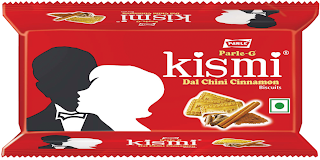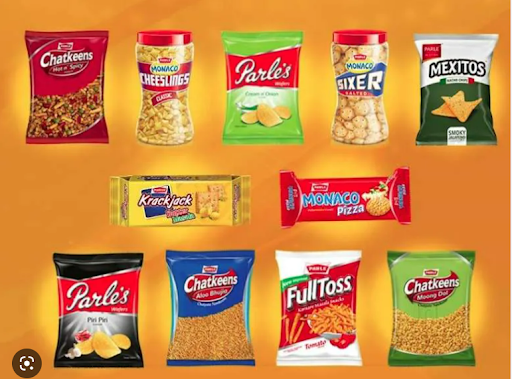PARLE PRODUCTS PVT LTD GST AND RETAINING COMPETITIVENESS#.
By enacting GST in July 2017, the Indian Goods and services tax (GST) Council eliminated the myriad of taxes and tax rates that were in place on a variety of items.2 The council also eliminated the variable tax structure that applied to various varieties of biscuits as part of this tax reorganization;
The same GST rate of 18% was applied to all varieties of biscuits, including mass-market biscuits priced below $1,004 per kilogram (kg) and mid-range and premium biscuits priced above $100 per kg.
Before the introduction of the GST, mass-market cookies (i.e., cookies priced under 100 per kg) were subject to a tax rate of roughly 14%, while cookies priced above 100 per kg were subject to a 22 to 24% tax rate.
Companies will be obliged to raise prices as a result of the growth in input costs and limited profit margins in the low-priced biscuit category. As it will be challenging to make any money in this market, biscuit companies won't be motivated to operate in the category below 100 per kg. Here is a
Price increases will be difficult, as they will affect demand for these products in a category that is price elastic."We are disappointed with the GST rate announced. This contravenes the idea of social justice, according to which the wealthy will not be required to pay higher taxes but the needy will. Parle's glucose category generated one-third of its sales, while its main competitors—Britannia.
Despite the fact that GST attempted to impose a consistent tax rate on all goods, taking into consideration the disparities in the Four distinct tax rates of 5, 12, 18, and 28% were introduced due to the nature of goods.15 The majority of essentials, such as milk, fresh produce, bread, and salt, were not subject to taxes. Other necessities, like
the low GST rate of 5% applied to items like edible oil, sugar, spices, tea, coffee, and rusk (a very dense, dry biscuit or twice-baked bread). The highest slab rate of 28% applied to 16 non-essential commodities (including chocolate, chewing gum, paint, and hair colour and luxury items (such as vehicles, high-end motorcycles, air conditioners, and refrigerators.
Prior to the introduction of the GST, the statutory tax rate for the majority of items was around 26.5%; after the GST, this rate was reduced to between 18% and 20%.18 To lessen the detrimental effects of a tax rate cut on Mass-market biscuits were one of the non-essential commodities on which the government increased the tax rates in order to raise money.
The new system would have a negative impact on glucose, Marie, milk, and other inexpensive biscuits. 35% of the entire biscuit market was made up of this low-priced biscuit category.19 However, premium cookie brands like Parle's Hide & Seek and Monaco cost more than $100 per kg.
Brands—would gain from the modification. The cross-subsidization of premium biscuits by the mass-market biscuit category was essentially implied by this development. The modifications to the GST rates increased competition for low-cost biscuits from branded namkeen (savory snacks) and rusk, which were subject to GST rates of 12 and 5%, respectively, in addition to premium biscuits.
The company received a significant portion of its income from Parle-G in its mass-market biscuit category, which also included Parle-G, Parle Marie, Krackjack, and Monaco. Since Parle-G was first sold in the market,
The business had maintained a low price point. Shah emphasized the attractiveness of Parle-G to the general public, saying, "Parle-G is not a biscuit for us, and not only for us but for our consumers. It is more of a main stay for them since of how it is ingested.
It's a routine. Parle-G is delicious with chai (tea), milk for kids, or coffee. Parle-G controlled between 75 and 80 percent of the market for glucose biscuits, but just 20 percent of the total market. The market for biscuits is $250 billion.
Three types of confectionary were sold in India: boiling sweets like lollipops and suckers, chocolates, and soft toffees, as well as mints and gum. In comparison to the biscuits segment, the sweets category was predicted to increase more quickly. The confections the market was projected to expand at a CAGR of almost 17% from 2016 to 2022.
The candy segment, out of the three, represented about half of the whole confectionery market. A CAGR of 12.70% was projected for the candy segment from 2016 to 2022, compared to a CAGR of 18.57% for chocolate, 16.90% for mints and gum, and 12.70% for candy.
Parle's primary source of income, Parle-G, had a very price-sensitive market. wide selectionIndian consumers had access to a variety of snacks that could be substituted for mass-produced biscuits, such as premium biscuits and other types of snacks. Considering the options, Parle It anticipated a 30 to 50% loss in sales if it cut the size of 2 packs by one biscuit each pack.
Pledge goods GST percentage Rate before GST (%)White chocolate (which lacks cocoa)Gum chewing 28 % Mass-market biscuits (less than 100 per kilogram) 18 % Premium biscuits 22–24%Other than white chocolate and gum, sugary confections Cakes & pastries: 18–21% brand-name namkeen (savory nibbles) 12 -26% Rusk 5- 12% .



.png)


Comments
Post a Comment